ELTON JOHN TATTOO
http://www.ratemyink.com/?action=ssp&pid=126016
DOWNLOAD
http://www.megaupload.com/?d=B3Y46M42
Sir Elton John performed for a sold-out audience Friday evening in Norfolk. I was among the 10,000 crammed into ODU’s Ted Constant Center for three hours, a welcome break from tax season. I enjoyed the concert but wish he had ditched the entire segment of songs with Leon Russell (the set list is here) and instead sung more of his hits.
His voice was wonderful, if lower than it used to be. Early on, the sound system was quite clear – I could hear the percussionist’s shakers, for example – except for the guitar, which I found strange. As the concert wore on, it seemed they turned up the volume, but even that was OK. I’ve long admired his piano playing and that did not disappoint.
What was really strange, though, was his lack of engaging the audience. This New York Times review from his concert two days describes it:
And that whole Leon Russell thing was really weird. I’ll admit – I never heard of Leon Russell before Friday night, despite his induction into the Rock & Roll Hall of Fame last week. Besides, I didn’t go to hear Russell (who sounded a lot like Willie Nelson but looked like one of the guys from ZZ Top).
I didn’t expect that John would be the over-the-top performer that he used to be – after all, he’ll be 64 this week – but I thought he’d sing enough of his old songs that it wouldn’t matter.
I’m sure he’s tired of singing the same songs; after all, “Philadelphia Freedom” was released in 1975. Which could be why he sang it so fast. But I never tire of hearing it and based on the audience response, I wasn’t alone. “Daniel,” his hit from 1973, was, unfortunately, cut from the set list.
I’m glad I went – it was good to see one of the performers I listened to as a teenager on WGH, even though he didn’t sing enough of the old songs for me. Another item on my bucket list complete.



(TV broadcast FLAC/mp3@320)
with the Royal Philharmonic Orchestra
Royal Festival Hall
Source:
Silver CD
Lineage:
Television Broadcast?>?>CD Silver>EAC WAV>FLAC8
01 - Funeral For A Friend
02 - Tonight
03 - Better Off Dead
04 - Idol
05 - I Think I'm Gonna Kill Myself
06 - I Feel like a Bullet (In The Gun Of Robert Ford)
07 - Bennie & The Jets
08 - Sorry Seems To Be The Hardest Word
09 - Part-time Love
10 - Crazy Water
Notes:
Elton performed with the Royal Philharmonic Orchestra for this event. I believe this was Davey Johnstone's first show with Elton (none of the band performances are included here, however, but three are included on the "Elton 60" DVD). This is a "must have" for any serious, or casual, Elton John fan.
Elton John - 1972-02-05 - London, UK
(TV broadcast FLAC)
http://www.fileserve.com/file/
mirror:
http://www.filesonic.com/file/
mirror:
http://www.filefactory.com/
http://hamptonroads.com/2011/
NORFOLK
Elton John could coast at this point.
One of the richest, most celebrated performers in pop, he certainly doesn't need to tour and give energetic shows like the one at Ted Constant Convocation Center on Friday night. But it's wonderful that the 63-year-old legend has lost none of his soul and passion and still shares it with fans.
Granted, he has mellowed. John isn't storming stages in the flamboyant, glam-rock get-ups of yesterday. But he's still glitzy.
At the Ted, he was stationed at the piano throughout his nearly three-hour show, decked out in a black suit. A glittery green crocodile and a cartoon of a young Elton in a white suit hanging from its mouth emblazoned the back of his long jacket.
The well-paced show centered on John's greatest hits and fan favorites. In a career spanning more than 40 years (he scored big hits in each decade), there were plenty. He was backed by a powerful nine-piece band that included drummer Nigel Olsson, a longtime member of John's band, and acclaimed vocalists Tata Vega and Rose Stone, sister of Sly and an original member of Sly & the Family Stone.
During the first half of the show, John and the band stretched out on extended versions of cuts from 1971's "Madman Across the Water" and 1973's "Goodbye Yellow Brick Road," two of his most ambitious albums. "Saturday Night's Alright For Fighting," "Levon" and "Tiny Dancer" morphed into driving rock-gospel workouts, emboldened with John's dazzling piano anchoring each song.
His voice has deepened with age, adding an attractive emotional heft and grit to the ballads, especially "Don't Let the Sun Go Down on Me" and "Candle in the Wind." As John performed the latter song, lights from cell phones dotted the darkened arena and waved from side to side.
Midway into the show, after an epic take on "Rocket Man" featuring long piano and rock guitar solos, stagehands pushed out another grand piano opposite John's. The artist then introduced his "idol," Leon Russell, the silver-haired singer-songwriter. In October, John and the 68-year-old, who on Monday was inducted into the Rock and Roll Hall of Fame, released "The Union," a back-to-basics duet album produced by T Bone Burnett.
The raucous energy of the show dipped as John and Russell traded verses and piano solos. They performed about five songs from "The Union" - all well-written and deftly crafted, but they warranted more intimate arrangements. The band nearly overpowered Russell.
After his exit, John returned to high-octane rock that had the house, packed mostly with baby boomers, on its feet. Preceded by a long, intricate piano solo, "Take Me to the Pilot" churned with pronounced elements of the blues and gospel, whose undercurrents have always blown through John's style.
He didn't talk much throughout the show but still managed to engage. Just before launching into "Bennie and the Jets," he invited those seated in the first few rows to come closer. John pounded out the staccato chords, as aging baby boomers rushed the stage as if were 1974.

(Audience FLAC)
Oct 24 2010 - Sunday
Shoreline Amphitheater
Neumann KM140s > Sound Devices MP2 > Edirol R09 > WAV > Audition > CDWave > FLAC
Performers
1 Neil Young (solo)
2 Grizzly Bear
3 Modest Mouse
4 Kris Kristoferson
5 T-Bone Burnett's Speaking Clock Review
>> Featuring >>
-- Elvis Costello
-- Neko Case
-- Jeff Bridges
-- Ralph Stanley
-- Elton John & Leon Russell
6 Pearl Jam
7 Buffalo Springfield
******************************
Neil Young
Sugar Mountain
Comes A Time (w/Pegi Young)
Grizzly Bear
While You Wait For The Others
Two Weeks
All We Ask
Balmy Night (Department of Eagles cover) (Daniel Solo)
Modest Mouse
Wild Pack of Family Dogs
Bukowski
Lives
Dashboard
The Devil's Workday
Blame It on the Tetons
Four Fingered Fisherman
Here's to Now (Ugly Casanova cover)
(T-Bone Burnett's Speaking Clock Review)
*Elvis Costello*
King of America
Slow Drag with Josephine
Jimmie Standing in the Rain
Sulphur to Sugarcane
National Ransom
*Neko Case*
Hold On, Hold On
Vengeance Is Sleeping
Dirty Knife
*Jeff Bridges*
Fallin' & Flyin' (w/Elvis Costello)
Brand New Angel
*Ralph Stanley*
(Unknown)
Lift Him Up
Man Of Constant Sorrow
*Elton John & Leon Russell*
If It Wasn't For Bad
Jimmie Rodgers' Dream
A Dream Come True
Gone to Shiloh (w/Neil Young)
Hearts Have Turned to Stone
When Love is Dying
Monkey Suit
Hey Ahab
There's No Tomorrow (w/Elvis Costello, Neko Case, Jeff Bridges, and Ralph Stanley)
(Kris Kristofferson)
Me & Bobby McGee
Jody and the Kid
Here Comes That Rainbow Again
The Promise
Sunday Morning Coming Down
Why Me?
(Pearl Jam)
Daughter
Down
Driftin'
Other Side (1st time played live)
The End
Walk With Me (Neil Young cover) (w/Neil Young)
Lukin
Just Breathe
Black
Eldery Woman Behind the Counter in a Small Town
(Buffalo Springfield)
On the Way Home
Rock & Roll Woman
Child's Claim
Do I Have to Come Right Out and Say It?
Go and Say Goodbye
I Am a Child
Kind Woman
Burned
For What It's Worth
Nowadays Clancy Can't Even Sing
Bluebird
Mr. Soul
Encore:
Rockin' In The Free World (w/everyone)
http://hotfile.com/dl/
http://uploading.com/files/
http://www.fileserve.com/file/
http://www.filefactory.com/
At New York’s Madison Square Garden, the British singer gave a preview last week of his new slimmed-down show that will be rolling out nationwide over the next few months, then around the world through November.
This time, there are no inflatable breasts and phallic bananas. The Las Vegas glitz of the Red Piano Tour is replaced by a stark black stage. Instead of Pamela Anderson pole-dancing, the veteran band studiously delivers 27 songs.
The jukebox of biggest hits kicks off promisingly with “Funeral for a Friend/Love Lies Bleeding,” embellished with flourishes from John’s longtime guitarist Davey Johnstone. “Saturday Night’s Alright for Fighting” rocks so hard that nobody seems to notice that it’s actually Wednesday.
Then John introduces “my idol” Leon Russell — an imposing figure who looks like Santa Claus and Gandalf rolled into one. Russell, inducted this week into the Rock and Roll Hall of Fame by John, joins him to perform tracks from their album “the Union,” released last year.
Gregg Allman joins the two onstage to share the vocals on “Gone to Shiloh.”
John has replaced his sophisticated video screens used on previous tours with some alarmingly literal effects. Golden lighting is used for “Goodbye Yellow Brick Road,” blue for “I Guess That’s Why They Call It the Blues” and a picture of a flame for “Candle in the Wind.”
Things also go off the boil with a couple of songs from 1971’s “Madman Across the Water.”
The accelerator kicks in just in time, with coruscating versions of “The Bitch Is Back” and “Burn Down the Mission.”
The three-hour show isn’t John at his outrageous showman best, though it shows why he is a consummate entertainer capable of selling 250 million records. The crowd in the 20,000-capacity arena waves lighters, sings every word, dances to “Crocodile Rock” and cheers as John declares the hall his favorite venue. He ends with an emotional encore of “Your Song,” dedicated to New York, “a great city.”
After a series of clips recapping Dr. John’s career, the show interwove moments from his speech with his performance of his classic “Right Place, Wrong Time”. A duet with Legend on “Such a Night” followed, highlighted by the interplay between the two on piano towards the song’s conclusion.
Darlene Love
Next, Bette Midler gave the induction speech for Darlene Love. She said that listening to Love’s music changed her view of the world, and called her “the very embodiment of teen spirit in the 60’s”.
Midler touched on some of the difficulties in Love’s career, but emphasized that she always triumphed and endured. The montage of clips found her talking about the sound of the records she made with Phil Spector and her lifelong love of gospel music.
Love took the stage and thanked Midler as “one of the celebrities who always returned my calls”. She also thanked bandleader Paul Schaffer, and mentioned that she would turn 70 in July. Her voice remained in remarkably good condition for her age, as displayed by her performance of “The Boy I’m Gonna Marry”.
She was joined on stage by Bruce Springsteen for a performance of “Zip-A-Dee-Doo-Dah” that drew heavily on gospel. He remained in the backing band for Love’s final number, a duet with Midler on “He’s a Rebel”.
He told the story of Cooper’s disastrous stage debut and Frank Zappa signing the band, describing them as “murderous drag queens”. The clips wisely focused on the early period when “Alice Cooper” was still a band and not just the lead singer’s pseudonym.
Cooper’s speech continued this theme, as he cited Glen Buxton as “the heart and soul of our band”. The rest of the speech was edited together with his performance of “Eighteen”, which sounded tame and nowhere near as jarring as it should have in this context.
Bassist Dennis Dunaway and guitarist Michael Bruce also got their moments at the podium. Drummer Neal Smith reiterated the importance of Buxton to the group, leading into a performance of “School’s Out” with a chorus of children wearing Cooper’s trademark facial makeup.
In contrast to the Cooper segment, the clips spanned Waits’ career, and if anything the later music sounded even stronger than the earlier work. Waits has remained remarkably creative and innovative throughout his time in the music industry.
Waits’ passionate rendition of “Make It Rain” was one of the evening’s highlights, and his speech was full of humor (he looked at the trophy and said he’d rather have a keychain-sized version). He described songs as “something interesting to do with the air”.
That led into a story about Lightning Hopkins, and how seeing that he had a room with a “KEEP OUT” sign told him he needed to get into show business as soon as possible. He thanked his family, in particular his wife and songwriting partner Kathleen Brennan.
His second performance, “Rain Dogs”, was just as strong as the first, and at the end the show cut back to Waits concluding his speech. After another humorous story about being given the key to the city of El Paso, he thanked Young and called his induction “encouraging”.
He talked about reconnecting with Russell in 2009 after losing touch with him for decades, and a series of clips recounted the beginnings of Russell’s career and his work on George Harrison’s Concert for Bangladesh.
Russell performed “Delta Lady“ and “A Song for You”, and while his voice was somewhat frail, he still put a great deal of emotion into his singing.
Diamond’s speech was surprisingly grouchy, though he may have intended it to be humorous. He admitted towards the end that he didn’t have a written speech, which went a long way towards explaining the rambling nature of his remarks.
His performance of "I Am, I Said" started out as a stripped-down acoustic number and then built to a grandiose full band arrangement. Diamond's voice sounded essentially the same as in the past, though compared to the passion of Love or Waits, he seemed somewhat lacking in enthusiasm.
He picked up the pace for "Sweet Caroline", wandering through the audience and getting Bruce Springsteen to sing along for a verse. Diamond seemed more natural in this performance, though his attempts at humor still felt strained.

(DVDfull pro-shot)
NTSC
Source: Pro Shot video (possibly the house cameras), SBD audio
Lineage: ?>DVD
Elton John- Piano/vocals
Davey Johnstone- Guitars/vocals
John Jorgenson-Guitars/Sax/vocals
Bob Birch- Bass/vocals
Guy Babylon- Keyboards
Charlie Morgan- Drums
John Mahon- Percussion/vocals
Billy Trudel-vocals
01 - Simple Life
02 - The One
03 - Grey Seal
04 - Goodbye Yellow Brick Road
05 - Honky Cat
06 - Can You Feel the Love Tonight
07 - Tiny Dancer
08 - I Guess That's Why They Call it the Blues
09 - If the River Can Bend
10 - I Don't Wanna Go on With You Like That
11 - Don't Let the Sun Go Down on Me
12 - Sorry Seems to be the Hardest Word
13 - The Last Song
14 - Daniel
15 - Love's Got Alot to Answer For
16 - Take Me to the Pilot
17 - Something About the Way You Look Tonight
18 - Made In England
19 - Believe
20 - Philadelphia Freedom
21 - Bennie and the Jets
22 - Saturday Night's Alright for Fighting
Notes:
This is a real nice Pro-shot DVD, with SBD audio. My guess is that this was sourced by the cameras used at the venue for the big screens. This was Elton's "The Big Picture" Tour, and features three songs from that album as well as a couple from his 1995 album, "Made in England". I believe an encore number is missing, as he was playing "Great Balls of Fire" on that tour as a final number, and it is not here.
::: FILEFACTORY ::: FILESERVE ::: FILESONIC :::


http://www.filefactory.com/
http://www.fileserve.com/file/
http://www.filesonic.it/file/

Welcome to another installment of Reissue Theory, where we reflect on notable albums and the reissues they may some day see. It’s been over two decades since Elton John released his career-spanning To Be Continued… box set, and so much has happened with his career since then. How do you cover such ground? Simple – make another one!
It’s only appropriate that Elton John titled his 1992 album The One. It was a major first for the superstar: his first album recorded in all too many years without any drugs or alcohol. It took the 1990 death of 18-year old Ryan White, a victim of AIDS acquired through a blood transfusion to treat hemophilia, to inspire John to embark on the road to sobriety. (Two years after White’s death, John created The Elton John AIDS Foundation and today remains a tireless champion in the fight against the disease.) In the very same year of 1990, John released one of the most lavish compact disc box sets released up to that time. Despite the LP-sized, four-disc collection’s title To Be Continued…, it’s likely that John didn’t realize just how drastically his life would change in the ensuing years. After all, the future brought more hits, Academy Awards, Tony Awards and a drug and alcohol-free life that, indeed, continues to the present day.
Today’s Reissue Theory posits what an expanded, up-to-date edition of To Be Continued… might look like. Very few career-spanning box sets have been updated in this manner; a notable exception is 1991’s Forty Years: The Artistry of Tony Bennett, which gained a fifth disc to become Fifty Years in 2004. If anyone is deserving of this accolade, however, it’s the original Rocket Man. Once disc couldn’t possibly cover the amount of ground John has travelled since 1990, so we’ve created To Be Continued…1992-2010, an sequel to that seminal box. Our first two discs take us on a journey from 1992 to 2010, encompassing John’s Adult Contemporary smashes of the 1990s and the more rootsy, back-to-basics sounds he’s embraced in the past decade. The third disc is dedicated to John’s theatre and film work, a surprisingly large part of his current career in music. Finally, we have an entire disc devoted to the singer’s collaborative guest appearances, as he may be the most frequent duet partner in modern recorded music! (This disc would be the most difficult to assemble due to licensing restrictions, but such an effort is far from unprecedented.) Our goal is to encompass both studio and live recordings, released and unreleased, familiar and unfamiliar. We hope to have crafted a definitive latter-day retrospective to follow the already-exemplary original box set.
Let’s begin after the jump, okay?
By 1992, Elton John had embraced sobriety and was ready to return to the recording studio. The result was The One, an 11-track set co-written with longtime collaborator Bernie Taupin with Chris Thomas at the production helm. The One showed that Elton was still at the top of his game more than twenty years after his chart debut, especially with Adult Contemporary listeners. The title track hit No. 1 on the AC chart and went Top 10 pop. “Simple Life” also hit No. 1 AC and “The Last Song” wasn’t far behind. “Runaway Train,” with guest Eric Clapton, charted in the U.K. Clearly the 1990s were off to a great start for Elton John. He followed The One with a starry duets album, but its success was topped when he teamed with lyricist Tim Rice (Jesus Christ Superstar, Evita) to compose the score to Walt Disney Pictures’ The Lion King in 1994. The magnitude of this assignment would define John for most of the rest of the decade and gain him an Oscar in the process. Still, he returned to the studio with Bernie Taupin’s lyrics for 1995’s Made in England, co-produced with Greg Penny, and as the title indicates, the album was a post-Lion King attempt to reconnect with his musical roots.
Davey Johnstone and Ray Cooper of the original Elton John Band returned, as did arranger Paul Buckmaster. Taupin’s lyrical concept for the album was an unusual one; only the title track had more than one word in the title. Both “Believe” (No. 1 AC) and “Blessed” (No. 2 AC) performed well, with the former edging the latter on the pop chart for a No. 13 peak. John could still count on lite-music radio play for his current material while his 1970s triumphs were heard daily on classic rock and increasingly, oldies formats, as the oldies concept shifted from the 1950s/1960s to 1960s/1970s. He wouldn’t actually come full circle to the sound of his early recordings for some years yet.
1997’s The Big Picture found the artist in familiar territory with a solidly crafted collection of predictable pop and AC ballads. The album has been dismissed recently by John as one made more out of commercial consideration than creative inspiration. That said, both “Something About the Way You Look Tonight” and “Recover Your Soul” were melodically appealing; “Something” topped the AC chart and made quite a splash, sales-wise. Why? It happened to be featured on the CD single of “Candle in the Wind (1997),” John’s George Martin-produced tribute to Diana, the late Princess of Wales. This single went on to become the biggest-selling single in Billboard history, and though John has emphatically stated that he will never perform “Candle in the Wind (1997)” again unless expressly requested by Princess Diana’s sons, it would seem inappropriate to eliminate the biggest-selling single of all time from our career anthology.
Disc One ends with a trio of live cover versions as John eased into his role as an elder statesman of rock and pop. As part of this role, inveterate music fan and collector John frequently mentored and championed young songwriters. He credited Ryan Adams, the writer of “Oh My Sweet Carolina,” with inspiring him to return to his musical roots rather than continue his Adult Contemporary supremacy. After more film work and his first stage musical ventures, 2001’s Songs from the West Coast was the result of John’s rekindled passion. Opening our Disc Two, the Patrick Leonard-produced album was almost universally hailed as his best effort since 1976’s Blue Moves. West Coast was incredibly diverse, like that sprawling classic. Witness the country-rock of “Birds,” the deep soul of “This Train Don’t Stop Here Anymore,” and pure pop of “I Want Love.” (The latter was aided by a video starring Robert Downey Jr.!) “Original Sin” may have been one of John’s most beautiful melodies ever, but much attention was given to “The Ballad of the Boy in the Red Shoes” and “American Triangle,” two stunning compositions by John and Taupin touching on AIDS and the tragic death of Matthew Shepard, respectively. Songs from the West Coast announced a superstar who was still relevant and still capable of surprising.
2004’s Peachtree Road was the direct sonic follow-up to West Coast, but John had an unexpected thrill in 2003 when his 1979 “Are You Ready for Love,” produced by Philly soul master Thom Bell, shot to the top of the U.K. charts after placement in an television ad for Sky Sports. We’ve included the song here as it was overlooked on the first box set; when performing in Britain, John still performs it today. Peachtree Road took the country leanings of West Coast even further, with John self-producing for the first time. He delivered a set of alternately stirring and subtle ballads and anthems, but never crosses the line from organic pop/rock to Adult Contemporary gloss. “All That I’m Allowed (I’m Thankful)” and “Answer in the Sky,” two of the most powerful melodies John had penned in years, both recalled his 1970s heyday. “Turn the Lights Out When You Leave” was an aching C&W tune while “They Call Her the Cat” showed that the piano man could still rock. Critical acclaim was stronger than sales, but John hardly seemed concerned. One B-side to a U.K. single of “Turn the Lights Out” was “Peter’s Song,” written by John and Taupin for the film Finding Neverland but ultimately unused by the filmmakers. We’ve included this lost gem here, and we follow that with a brace of tracks from 2006’s wistful The Captain and the Kid. John’s autobiographical concept album sequel to 1975’s Captain Fantastic and the Brown Dirt Cowboy is the work of two mature artists looking back on their lives with great nostalgia and affection. Finally, Disc Two closes with four tracks from 2010’s The Union, John’s critically-hailed collaboration with his early idol Leon Russell. The Union made a strong showing at No. 3 on the album charts its first week of release, shockingly John’s highest opening placement since 1976’s Blue Moves.
Disc Three turns to stage and screen. It’s impossible to contain all of John’s song contributions to films on one disc, but we’ve opened with the three tracks recorded by John from his biggest movie project of all: the score to The Lion King. Of course, the smash “Can You Feel the Love Tonight” makes an appearance. After Disney Theatrical Productions’ enormously successful movie-to-stage transformation of Beauty and the Beast, The Lion King was a natural for the company’s next Broadway berth. With visionary direction by Julie Taymor (recently-ousted helmer of Spider-Man: Turn Off the Dark), it was the toast of Broadway, defeating the ambitious literary adaptation Ragtime at the 52nd Annual Tony Awards in 1998. (Ragtime’s Stephen Flaherty and Lynn Ahrens, however, took home the Best Score prize.) Having gotten his feet wet with The Lion King, John and lyricist Tim Rice embarked on another theatrical project, and they wouldn’t have to wait long for that Tony! They were signed to write their first wholly original Broadway score for a musical update of Verdi’s Aida. Originally titled Elaborate Lives: The Legend of Aida in its 1998 premiere at the Alliance Theatre in Atlanta, Georgia (John’s American home), it lost a few words in the title and gained a new director, co-writers and designers by the time of its Broadway debut at The Palace in 2000. Disney’s gamble paid off. Aida ran for over four years and 1,852 performances on the Main Stem, and picked up Tony Awards for its leading actress, Heather Headley, as well as in Lighting, Scenic Design and yes, Best Score categories. (It was excluded from the Best Musical running.) We’ve included tracks from both John’s commercially released concept album and his original, unreleased demo recordings.
John also found time to compose an orchestral score to Albert Brooks’ comedy The Muse as well as songs for DreamWorks’ animated buddy musical The Road to El Dorado and the Julia Roberts vehicle Mona Lisa Smile. More notable are his last two Broadway efforts to date. 2006’s Lestat ranks as his only theatrical failure, and the only one to feature lyrics by Taupin. While the show only played 39 performances, John’s music was generally the least of its problems, and some attractive melodies were to be found. Best of them all was “Right Before My Eyes,” a song written and inserted during the troubled Broadway preview period, and then roundly ignored. It’s criminal that this melody is so unknown, as it’s one of John’s most longing. It deserves a pop reincarnation devoid of the vampiric lyrics. “Right Before My Eyes” has been included from a live television performance on Ellen, while two other songs have been drawn from John’s demos. Opening in 2005 in London and 2008 in New York, Billy Elliot is John’s most successful original score to date, both artistically and commercially. The singer/songwriter clearly felt a kinship with the title character, a boy who yearns to dance. John and lyricist/librettist Lee Hall crafted a moving score including Billy’s anthem of empowerment, “Electricity” and the ironically jovial “Merry Christmas, Maggie Thatcher.” While a new musical hasn’t yet emerged, John wrote an end title song for Baz Luhrmann’s 2008 film Australia and also contributed two new songs to Gnomeo and Juliet produced by his own Rocket Pictures. “Hello, Hello,” performed in the film as a duet with Lady Gaga, was unavailable to appear on Walt Disney Records’ original soundtrack recording, but our hypothetical collection has included it to round out Disc Three. (Such material usually has a way of trickling out at some point in the future!)
Disc Four, The Collaborations, was the hardest to assemble by a country mile! In his long career, it’s easier to think of artists who have collaborated with Elton John than those who haven’t. Among the duet partners not represented on our collection: Neil Sedaka, Dionne Warwick, Gladys Knight, Stevie Wonder, Randy Newman, Luciano Pavarotti, Dolly Parton, Rosie O’Donnell, Tina Turner, Cher, Collective Soul, Shawn Mullins, Earl Scruggs, Brian Wilson, Bruce Hornsby, B.B. King, Patti LaBelle, Joss Stone, Ann Wilson, Charles Aznavour…and Bob the Builder. Just to name a few!
So who has made the cut? As Elton John’s musical collaborations run the stylistic gamut, we’ve decided to represent as many genres as possible, and these tracks encompass both covers of favorite songs and originals. Hence, our eclectic Disc Four includes appearances by Tony Bennett, Alice in Chains, Eminem, Mary J. Blige, Timbaland, The Scissor Sisters, Ray Charles, Elvis Costello, Billy Joel and RuPaul, among others! Of course, we’ve included the chart-topping revival of “Don’t Let the Sun Go Down on Me” with George Michael, and “True Love” with Kiki Dee, reuniting John with his “Don’t Go Breaking My Heart” partner. John’s duet streak shows no sign of letting up; he joined with Kanye West for West’s “All of the Lights” late in 2010, and his mutual admiration society with Leon Russell is thriving onstage today.
Consideration was given to changing the title of this box set sequel. But in 2011, at the age of 64, Elton John seems as busy as ever, with music, philanthropy and now fatherhood. The story of Captain Fantastic is still, simply, To Be Continued…
Elton John, To Be Continued…1992-2010 (Universal, 2011)
Disc 1: In the Studio and Onstage 1992-2000
Disc 1, Track 5 & Disc 4, Track 2 from Duets, MCA 10926, 1993
Disc 1, Tracks 6-8 from Made in England, Rocket/Island 314 526 185-2, 1995
Disc 1, Track 9 from Love Songs, MCA 114181, 1996
Disc 1, Tracks 10-11 from The Big Picture, Rocket/Mercury 314 536 266-2, 1997
Disc 1, Track 12 from Something About the Way You Look Tonight, Rocket/A&M single 314 568 108 2, 1997
Disc 1, Track 13 previously unreleased on CD, from An All-Star Tribute to Joni Mitchell (2000)
Disc 1, Track 14 previously unreleased on CD, from An All-Star Tribute to Brian Wilson (2001)
Disc 1, Track 15 previously unreleased on CD, from CMT Crossroads (2002)
Disc 2, Tracks 1-4 from Songs from the West Coast (Mercury 586459, 2001)
Disc 2, Track 5 from Are You Ready for Love, Southern Fried/Mercury/Ultra single UL 1177-2, 2003
Disc 2, Tracks 6-8 from Peachtree Road, Mercury 986876, 2004
Disc 2, Track 9 from Turn the Lights Out When You Leave, Rocket single 9870663, 2004
Disc 2, Tracks 10-12 from The Captain and the Kid, Interscope B0007837-02, 2006
Disc 2, Tracks 13-16 from The Union, Decca 14840, 2010
Disc 3, Tracks 1-3 from The Lion King: Original Motion Picture Soundtrack, Walt Disney Records 60858-7. 1994
Disc 3, Tracks 4 & 6 from Elton John and Tim Rice’s Aida, Rocket/Island 314 524 628-2, 1999
Disc 3, Tracks 5 & 7 previously unreleased demos from the musical Aida
Disc 3, Track 8 from The Muse: Original Motion Picture Soundtrack, Rocket/Island 314 546 517-2, 1999
Disc 3, Track 9 from Elton John’s The Road to El Dorado, DreamWorks 0044-50259-2, 2000
Disc 3, Track 10 from Mona Lisa Smile, Epic EK 90737, 2003
Disc 3, Tracks 11-12 previously unreleased demos from the musical Lestat
Disc 2, Track 13 previously unreleased live performance on Ellen from the musical Lestat
Disc 3, Track 14 from Electricity, Rocket/Mercury single 9872183, 2005
Disc 3, Track 15 from Peachtree Road: Limited Edition, Rocket/Mercury 9872303, 2004
Disc 3, Track 16 previously unreleased, from the musical Billy Elliot
Disc 3, Track 17 previously available as promotional CD-R, no cat. no., from the film Australia
Disc 3, Track 18 previously unreleased on CD, from the film Gnomeo and Juliet
Disc 4, Track 1 from Columbia single 44K 74130, 1991
Disc 4, Track 3 from MCA single MCA5P2967, 1993
Disc 4, Track 4 from Queen, Greatest Hits III, Hollywood 162250, 1999
Disc 4, Track 5 from Universal single UNIR 20349-2, 2000
Disc 4, Tracks 6 from Curtain Call: The Hits (Aftermath/Interscope
Disc 4, Tracks 7 and 15 previously unreleased television performances
Disc 4, Track 8 from Lulu, Together, Mercury 0630212, 2002
Disc 4, Track 9 from Ray Charles, Genius Loves Company, Concord/Hear Music 2248, 2004
Disc 4, Track 10 from So Amazing: An All-Star Tribute to Luther Vandross, J Records 82876 62472-2, 2005
Disc 4, Track 11 from Rod Stewart, The Great American Songbook IV, J Records 82876 75190-2, 2005
Disc 4, Track 12 from Gilbert O’Sullivan, UK publishing promotional CD, Sony BMG PUB063, 2005
Disc 4, Track 13 from Scissor Sisters, Ta-Dah!, Universal Motown 0007499, 2006
Disc 4, Track 14 from Tony Bennett, Duets: An American Classic, Columbia 80979, 2006
Disc 4, Track 16 from Timbaland, Presents Shock Value, Interscope 8594, 2007
Disc 4, Track 17 from Alice in Chains, Black Gives Way to Blue digital-only single (EMI/Virgin), 2009

(DVDfull pro-shot)
Christmas In London 1974 MasterPort pro shot NTSC
audio
MPEG-2 Program Stream << { 1 vid, 1 aud }
Sys Bitrate: 10080 kb/s VBR
cbr
0xc0:48000Hz 384 kb/s tot , Stereo
Video
Codec(s) are Installed
18 max; N=18, M=3 (97%)
pic 720 x 480
10. Grimsby
11. Rocket Man
12. Goodbye Yellow Brick Road
13. Daniel
14. Grey Seal
01. Bob Harris's Announcement
02. Bennie And The Jets
03. Band Introduction
04. Lucy In The Sky With Diamonds
05. I Saw Her Standing There
06. Don't Let The Sun Go Down On Me
07. Honky Cat
08. Saturday Night's Alright For Fighting
09. Crocodile Rock
10. The Bitch Is Back
11. Your Song
12. White Christmas (Special Guest: Rod Stewart and Gary Glitter)
13. Outro
A very good recording which has't been effected by age. Only BBC can tell you why they didn't record the whole show. On a personal note I think Neigel Olson was the best drummer in pop music. He would have been killer in a Rock Band. The rest of the writeing comes from a web page.By late 1974, Elton John was as big as he was ever going to be. Goodbye Yellow Brick Road had already seen him peak as a writer, but he wasn’t quite ready to commence the downward slide that eventually engulfed the remainder of his 1970s and, as a live performer, he was still at the top of his game. Who better, then, to ring in that year’s Christmas season with a one hour televised concert, courtesy of the British Old Grey Whistle Test?
The cameras caught the entire show, but broadcast just two-thirds of it. Here, the full 82 minute outing is presented in all its vibrant color and cabaret outrage, with Elton simply banging out the hits and the favorites - "Crocodile Rock," "Honky Cat," "Lucy In The Sky," "Benny and the Jets," you name it, it’s probably here.
The disc is divided into two parts; the opening half dozen songs, before the broadcast got under way, include excellent versions of "Rocket Man," "Daniel" and "Goodbye Yellow Brick Road"; Whistle Test viewers joined the show midway through "Grey Seal," and then stayed on board all the way through to the riotous closing Christmas wishes, with Elton joined onstage by Rod Stewart and Gary Glitter, positively the only other figures on the UK scene of the day that could share his limelight and not be dwarfed by his platforms.
A large timing strip across the bottom of the picture does detract from the quality of the print, but one quickly grows accustomed to it. Besides, there’s so much going on elsewhere on stage that why would you even be looking down there? There’s a lot of other Elton live footage out there, vintage and recent, officially sanctioned and otherwise. Of it all, however, this is Elton at his peak, musically, visually and, via those trademark spectacular spectacles, sartorially. - Dave Thompson


http://www.filefactory.com/
http://www.fileserve.com/file/
http://hotfile.com/dl/
http://www.ratemyink.com/?action=ssp&pid=126016
| This is my Elton John tattoo on my left arm. It was done by Chu at Mothers in Covington, KY! | ||
"Elton John" "Your Song" "MENINAS CANTORAS DE PETRÓPOLIS
Elton John: "Live Like Horses" - Meninas Cantoras de Petrópolis
DOWNLOAD
http://www.megaupload.com/?d=B3Y46M42
Concert review: Elton John
http://blog.vivianpaige.com/Sir Elton John performed for a sold-out audience Friday evening in Norfolk. I was among the 10,000 crammed into ODU’s Ted Constant Center for three hours, a welcome break from tax season. I enjoyed the concert but wish he had ditched the entire segment of songs with Leon Russell (the set list is here) and instead sung more of his hits.
His voice was wonderful, if lower than it used to be. Early on, the sound system was quite clear – I could hear the percussionist’s shakers, for example – except for the guitar, which I found strange. As the concert wore on, it seemed they turned up the volume, but even that was OK. I’ve long admired his piano playing and that did not disappoint.
What was really strange, though, was his lack of engaging the audience. This New York Times review from his concert two days describes it:
For most of the concert, though, he seemed happier to yield control to the songs. In a show without much background video or other distractions, Mr. John put himself across evenly, speaking little, tottering around the stage a few times in a black long coat, motioning for applause.For a very long time, I felt like I was an intruder in a private jam session. He rarely spoke between songs and it wasn’t until he got to “Don’t Let the Sun Go Down on Me” that he even invited the audience to sing along.
And that whole Leon Russell thing was really weird. I’ll admit – I never heard of Leon Russell before Friday night, despite his induction into the Rock & Roll Hall of Fame last week. Besides, I didn’t go to hear Russell (who sounded a lot like Willie Nelson but looked like one of the guys from ZZ Top).
I didn’t expect that John would be the over-the-top performer that he used to be – after all, he’ll be 64 this week – but I thought he’d sing enough of his old songs that it wouldn’t matter.
I’m sure he’s tired of singing the same songs; after all, “Philadelphia Freedom” was released in 1975. Which could be why he sang it so fast. But I never tire of hearing it and based on the audience response, I wasn’t alone. “Daniel,” his hit from 1973, was, unfortunately, cut from the set list.
I’m glad I went – it was good to see one of the performers I listened to as a teenager on WGH, even though he didn’t sing enough of the old songs for me. Another item on my bucket list complete.

3/21/2011
http://Elton John - 1972-02-05 - London, UK (FLAC/mp3)


(TV broadcast FLAC/mp3@320)
with the Royal Philharmonic Orchestra
Royal Festival Hall
Source:
Silver CD
Lineage:
Television Broadcast?>?>CD Silver>EAC WAV>FLAC8
01 - Funeral For A Friend
02 - Tonight
03 - Better Off Dead
04 - Idol
05 - I Think I'm Gonna Kill Myself
06 - I Feel like a Bullet (In The Gun Of Robert Ford)
07 - Bennie & The Jets
08 - Sorry Seems To Be The Hardest Word
09 - Part-time Love
10 - Crazy Water
Notes:
Elton performed with the Royal Philharmonic Orchestra for this event. I believe this was Davey Johnstone's first show with Elton (none of the band performances are included here, however, but three are included on the "Elton 60" DVD). This is a "must have" for any serious, or casual, Elton John fan.
Elton John - 1972-02-05 - London, UK
(TV broadcast FLAC)
http://www.fileserve.com/file/
mirror:
http://www.filesonic.com/file/
mirror:
http://www.filefactory.com/
Sir Elton gives a great show at Norfolk's Ted
http://hamptonroads.com/2011/
NORFOLK
Elton John could coast at this point.
One of the richest, most celebrated performers in pop, he certainly doesn't need to tour and give energetic shows like the one at Ted Constant Convocation Center on Friday night. But it's wonderful that the 63-year-old legend has lost none of his soul and passion and still shares it with fans.
Granted, he has mellowed. John isn't storming stages in the flamboyant, glam-rock get-ups of yesterday. But he's still glitzy.
At the Ted, he was stationed at the piano throughout his nearly three-hour show, decked out in a black suit. A glittery green crocodile and a cartoon of a young Elton in a white suit hanging from its mouth emblazoned the back of his long jacket.
The well-paced show centered on John's greatest hits and fan favorites. In a career spanning more than 40 years (he scored big hits in each decade), there were plenty. He was backed by a powerful nine-piece band that included drummer Nigel Olsson, a longtime member of John's band, and acclaimed vocalists Tata Vega and Rose Stone, sister of Sly and an original member of Sly & the Family Stone.
During the first half of the show, John and the band stretched out on extended versions of cuts from 1971's "Madman Across the Water" and 1973's "Goodbye Yellow Brick Road," two of his most ambitious albums. "Saturday Night's Alright For Fighting," "Levon" and "Tiny Dancer" morphed into driving rock-gospel workouts, emboldened with John's dazzling piano anchoring each song.
His voice has deepened with age, adding an attractive emotional heft and grit to the ballads, especially "Don't Let the Sun Go Down on Me" and "Candle in the Wind." As John performed the latter song, lights from cell phones dotted the darkened arena and waved from side to side.
Midway into the show, after an epic take on "Rocket Man" featuring long piano and rock guitar solos, stagehands pushed out another grand piano opposite John's. The artist then introduced his "idol," Leon Russell, the silver-haired singer-songwriter. In October, John and the 68-year-old, who on Monday was inducted into the Rock and Roll Hall of Fame, released "The Union," a back-to-basics duet album produced by T Bone Burnett.
The raucous energy of the show dipped as John and Russell traded verses and piano solos. They performed about five songs from "The Union" - all well-written and deftly crafted, but they warranted more intimate arrangements. The band nearly overpowered Russell.
After his exit, John returned to high-octane rock that had the house, packed mostly with baby boomers, on its feet. Preceded by a long, intricate piano solo, "Take Me to the Pilot" churned with pronounced elements of the blues and gospel, whose undercurrents have always blown through John's style.
He didn't talk much throughout the show but still managed to engage. Just before launching into "Bennie and the Jets," he invited those seated in the first few rows to come closer. John pounded out the staccato chords, as aging baby boomers rushed the stage as if were 1974.
Bridge School Benefit - 2010-10-24 - Mountain View, CA (FLAC) by REQUEST

(Audience FLAC)
Oct 24 2010 - Sunday
Shoreline Amphitheater
Neumann KM140s > Sound Devices MP2 > Edirol R09 > WAV > Audition > CDWave > FLAC
Performers
1 Neil Young (solo)
2 Grizzly Bear
3 Modest Mouse
4 Kris Kristoferson
5 T-Bone Burnett's Speaking Clock Review
>> Featuring >>
-- Elvis Costello
-- Neko Case
-- Jeff Bridges
-- Ralph Stanley
-- Elton John & Leon Russell
6 Pearl Jam
7 Buffalo Springfield
******************************
Neil Young
Sugar Mountain
Comes A Time (w/Pegi Young)
Grizzly Bear
While You Wait For The Others
Two Weeks
All We Ask
Balmy Night (Department of Eagles cover) (Daniel Solo)
Modest Mouse
Wild Pack of Family Dogs
Bukowski
Lives
Dashboard
The Devil's Workday
Blame It on the Tetons
Four Fingered Fisherman
Here's to Now (Ugly Casanova cover)
(T-Bone Burnett's Speaking Clock Review)
*Elvis Costello*
King of America
Slow Drag with Josephine
Jimmie Standing in the Rain
Sulphur to Sugarcane
National Ransom
*Neko Case*
Hold On, Hold On
Vengeance Is Sleeping
Dirty Knife
*Jeff Bridges*
Fallin' & Flyin' (w/Elvis Costello)
Brand New Angel
*Ralph Stanley*
(Unknown)
Lift Him Up
Man Of Constant Sorrow
*Elton John & Leon Russell*
If It Wasn't For Bad
Jimmie Rodgers' Dream
A Dream Come True
Gone to Shiloh (w/Neil Young)
Hearts Have Turned to Stone
When Love is Dying
Monkey Suit
Hey Ahab
There's No Tomorrow (w/Elvis Costello, Neko Case, Jeff Bridges, and Ralph Stanley)
(Kris Kristofferson)
Me & Bobby McGee
Jody and the Kid
Here Comes That Rainbow Again
The Promise
Sunday Morning Coming Down
Why Me?
(Pearl Jam)
Daughter
Down
Driftin'
Other Side (1st time played live)
The End
Walk With Me (Neil Young cover) (w/Neil Young)
Lukin
Just Breathe
Black
Eldery Woman Behind the Counter in a Small Town
(Buffalo Springfield)
On the Way Home
Rock & Roll Woman
Child's Claim
Do I Have to Come Right Out and Say It?
Go and Say Goodbye
I Am a Child
Kind Woman
Burned
For What It's Worth
Nowadays Clancy Can't Even Sing
Bluebird
Mr. Soul
Encore:
Rockin' In The Free World (w/everyone)
http://hotfile.com/dl/
http://uploading.com/files/
http://www.fileserve.com/file/
http://www.filefactory.com/
Elton John cleans up his act
http://www.bendbulletin.com/By Mark Beech / Bloomberg News
Published: March 20. 2011 4:00AM PSTNEW YORK — Perhaps it’s something to do with becoming a father. Elton John has cleaned up his act.
At New York’s Madison Square Garden, the British singer gave a preview last week of his new slimmed-down show that will be rolling out nationwide over the next few months, then around the world through November.
This time, there are no inflatable breasts and phallic bananas. The Las Vegas glitz of the Red Piano Tour is replaced by a stark black stage. Instead of Pamela Anderson pole-dancing, the veteran band studiously delivers 27 songs.
The jukebox of biggest hits kicks off promisingly with “Funeral for a Friend/Love Lies Bleeding,” embellished with flourishes from John’s longtime guitarist Davey Johnstone. “Saturday Night’s Alright for Fighting” rocks so hard that nobody seems to notice that it’s actually Wednesday.
Then John introduces “my idol” Leon Russell — an imposing figure who looks like Santa Claus and Gandalf rolled into one. Russell, inducted this week into the Rock and Roll Hall of Fame by John, joins him to perform tracks from their album “the Union,” released last year.
Gregg Allman joins the two onstage to share the vocals on “Gone to Shiloh.”
John has replaced his sophisticated video screens used on previous tours with some alarmingly literal effects. Golden lighting is used for “Goodbye Yellow Brick Road,” blue for “I Guess That’s Why They Call It the Blues” and a picture of a flame for “Candle in the Wind.”
Things also go off the boil with a couple of songs from 1971’s “Madman Across the Water.”
The accelerator kicks in just in time, with coruscating versions of “The Bitch Is Back” and “Burn Down the Mission.”
The three-hour show isn’t John at his outrageous showman best, though it shows why he is a consummate entertainer capable of selling 250 million records. The crowd in the 20,000-capacity arena waves lighters, sings every word, dances to “Crocodile Rock” and cheers as John declares the hall his favorite venue. He ends with an emotional encore of “Your Song,” dedicated to New York, “a great city.”
2011 Rock and Roll Hall of Fame Induction Ceremony Recap
http://www.suite101.com/By Paul Brown
Last Updated Mar 21, 2011, Published Mar 20, 2011
Tom Waits performs at the 2011 Rock and Roll Hall of Fame induction ceremony.
AP Photo/Evan Agostini
AP Photo/Evan Agostini
Stellar performances from Tom Waits and Darlene Love were the best moments of the annual Rock and Roll Hall of Fame induction ceremony.
Tom Waits provided the highlights of the 2011 Rock and Roll Hall of Fame induction ceremony, which aired (in highly edited form) on March 20, 2011 on Fuse. Dr. John, Darlene Love, Alice Cooper, Leon Russell, and Neil Diamond were also inducted, and gave performances of highly variable quality.Dr. John
The ceremony opened with John Legend speaking about Dr. John. He spoke about the importance of New Orleans’ musical heritage and Dr. John’s role in preserving and promoting the city’s legacy.After a series of clips recapping Dr. John’s career, the show interwove moments from his speech with his performance of his classic “Right Place, Wrong Time”. A duet with Legend on “Such a Night” followed, highlighted by the interplay between the two on piano towards the song’s conclusion.
Darlene Love
Next, Bette Midler gave the induction speech for Darlene Love. She said that listening to Love’s music changed her view of the world, and called her “the very embodiment of teen spirit in the 60’s”.
Midler touched on some of the difficulties in Love’s career, but emphasized that she always triumphed and endured. The montage of clips found her talking about the sound of the records she made with Phil Spector and her lifelong love of gospel music.
Love took the stage and thanked Midler as “one of the celebrities who always returned my calls”. She also thanked bandleader Paul Schaffer, and mentioned that she would turn 70 in July. Her voice remained in remarkably good condition for her age, as displayed by her performance of “The Boy I’m Gonna Marry”.
She was joined on stage by Bruce Springsteen for a performance of “Zip-A-Dee-Doo-Dah” that drew heavily on gospel. He remained in the backing band for Love’s final number, a duet with Midler on “He’s a Rebel”.
Alice Cooper
In a drastic change of pace, Alice Cooper was inducted by Rob Zombie. But in keeping with the professionalism of the occasion, Zombie was relatively subdued, apart from using the term “badass motherf---ers”.He told the story of Cooper’s disastrous stage debut and Frank Zappa signing the band, describing them as “murderous drag queens”. The clips wisely focused on the early period when “Alice Cooper” was still a band and not just the lead singer’s pseudonym.
Cooper’s speech continued this theme, as he cited Glen Buxton as “the heart and soul of our band”. The rest of the speech was edited together with his performance of “Eighteen”, which sounded tame and nowhere near as jarring as it should have in this context.
Bassist Dennis Dunaway and guitarist Michael Bruce also got their moments at the podium. Drummer Neal Smith reiterated the importance of Buxton to the group, leading into a performance of “School’s Out” with a chorus of children wearing Cooper’s trademark facial makeup.
Tom Waits
His brow covered by a black hat, Neil Young admitted he had no notes for his introduction for Tom Waits. He spoke of Waits’ “immense talent” before the clips recapping Waits’ career played.In contrast to the Cooper segment, the clips spanned Waits’ career, and if anything the later music sounded even stronger than the earlier work. Waits has remained remarkably creative and innovative throughout his time in the music industry.
Waits’ passionate rendition of “Make It Rain” was one of the evening’s highlights, and his speech was full of humor (he looked at the trophy and said he’d rather have a keychain-sized version). He described songs as “something interesting to do with the air”.
That led into a story about Lightning Hopkins, and how seeing that he had a room with a “KEEP OUT” sign told him he needed to get into show business as soon as possible. He thanked his family, in particular his wife and songwriting partner Kathleen Brennan.
His second performance, “Rain Dogs”, was just as strong as the first, and at the end the show cut back to Waits concluding his speech. After another humorous story about being given the key to the city of El Paso, he thanked Young and called his induction “encouraging”.
Leon Russell
Elton John introduced Leon Russell, describing how he first saw him performing with Delaney & Bonnie and how they later worked together. He talked about how surprised he was to learn how many records Russell played on, and listed a portion of his sessions.He talked about reconnecting with Russell in 2009 after losing touch with him for decades, and a series of clips recounted the beginnings of Russell’s career and his work on George Harrison’s Concert for Bangladesh.
Russell performed “Delta Lady“ and “A Song for You”, and while his voice was somewhat frail, he still put a great deal of emotion into his singing.
Neil Diamond
After a clip of Doors drummer John Densmore presenting the Ahmet Ertegun Award to Elektra Records founder Jac Holzman, Paul Simon introduced Neil Diamond, saying he was known in his neighborhood as “the Jewish Elvis Presley”.Diamond’s speech was surprisingly grouchy, though he may have intended it to be humorous. He admitted towards the end that he didn’t have a written speech, which went a long way towards explaining the rambling nature of his remarks.
His performance of "I Am, I Said" started out as a stripped-down acoustic number and then built to a grandiose full band arrangement. Diamond's voice sounded essentially the same as in the past, though compared to the passion of Love or Waits, he seemed somewhat lacking in enthusiasm.
He picked up the pace for "Sweet Caroline", wandering through the audience and getting Bruce Springsteen to sing along for a verse. Diamond seemed more natural in this performance, though his attempts at humor still felt strained.
Group Finale
The group jam at the end kicked off with Lloyd Price trading off verses of "Stagger Lee" with Dr. John, Russell, and Elton John. Cooper inexplicably sang lead on "Da Doo Ron Ron" before Midler took over. Diamond, Love, and Elton John all joined in to bring the number to a close.Elton John - 1998-01-23 - Nashville, TN (DVDfull pro-shot)

(DVDfull pro-shot)
NTSC
Source: Pro Shot video (possibly the house cameras), SBD audio
Lineage: ?>DVD
Elton John- Piano/vocals
Davey Johnstone- Guitars/vocals
John Jorgenson-Guitars/Sax/vocals
Bob Birch- Bass/vocals
Guy Babylon- Keyboards
Charlie Morgan- Drums
John Mahon- Percussion/vocals
Billy Trudel-vocals
01 - Simple Life
02 - The One
03 - Grey Seal
04 - Goodbye Yellow Brick Road
05 - Honky Cat
06 - Can You Feel the Love Tonight
07 - Tiny Dancer
08 - I Guess That's Why They Call it the Blues
09 - If the River Can Bend
10 - I Don't Wanna Go on With You Like That
11 - Don't Let the Sun Go Down on Me
12 - Sorry Seems to be the Hardest Word
13 - The Last Song
14 - Daniel
15 - Love's Got Alot to Answer For
16 - Take Me to the Pilot
17 - Something About the Way You Look Tonight
18 - Made In England
19 - Believe
20 - Philadelphia Freedom
21 - Bennie and the Jets
22 - Saturday Night's Alright for Fighting
Notes:
This is a real nice Pro-shot DVD, with SBD audio. My guess is that this was sourced by the cameras used at the venue for the big screens. This was Elton's "The Big Picture" Tour, and features three songs from that album as well as a couple from his 1995 album, "Made in England". I believe an encore number is missing, as he was playing "Great Balls of Fire" on that tour as a final number, and it is not here.
::: FILEFACTORY ::: FILESERVE ::: FILESONIC :::


http://www.filefactory.com/
http://www.fileserve.com/file/
http://www.filesonic.it/file/
The Second Disc
http://theseconddisc.com/2011/Expanded and Remastered Music News
Reissue Theory: Elton John, “To Be Continued…1992-2010″
leave a comment »
Welcome to another installment of Reissue Theory, where we reflect on notable albums and the reissues they may some day see. It’s been over two decades since Elton John released his career-spanning To Be Continued… box set, and so much has happened with his career since then. How do you cover such ground? Simple – make another one!
It’s only appropriate that Elton John titled his 1992 album The One. It was a major first for the superstar: his first album recorded in all too many years without any drugs or alcohol. It took the 1990 death of 18-year old Ryan White, a victim of AIDS acquired through a blood transfusion to treat hemophilia, to inspire John to embark on the road to sobriety. (Two years after White’s death, John created The Elton John AIDS Foundation and today remains a tireless champion in the fight against the disease.) In the very same year of 1990, John released one of the most lavish compact disc box sets released up to that time. Despite the LP-sized, four-disc collection’s title To Be Continued…, it’s likely that John didn’t realize just how drastically his life would change in the ensuing years. After all, the future brought more hits, Academy Awards, Tony Awards and a drug and alcohol-free life that, indeed, continues to the present day.
Today’s Reissue Theory posits what an expanded, up-to-date edition of To Be Continued… might look like. Very few career-spanning box sets have been updated in this manner; a notable exception is 1991’s Forty Years: The Artistry of Tony Bennett, which gained a fifth disc to become Fifty Years in 2004. If anyone is deserving of this accolade, however, it’s the original Rocket Man. Once disc couldn’t possibly cover the amount of ground John has travelled since 1990, so we’ve created To Be Continued…1992-2010, an sequel to that seminal box. Our first two discs take us on a journey from 1992 to 2010, encompassing John’s Adult Contemporary smashes of the 1990s and the more rootsy, back-to-basics sounds he’s embraced in the past decade. The third disc is dedicated to John’s theatre and film work, a surprisingly large part of his current career in music. Finally, we have an entire disc devoted to the singer’s collaborative guest appearances, as he may be the most frequent duet partner in modern recorded music! (This disc would be the most difficult to assemble due to licensing restrictions, but such an effort is far from unprecedented.) Our goal is to encompass both studio and live recordings, released and unreleased, familiar and unfamiliar. We hope to have crafted a definitive latter-day retrospective to follow the already-exemplary original box set.
Let’s begin after the jump, okay?
By 1992, Elton John had embraced sobriety and was ready to return to the recording studio. The result was The One, an 11-track set co-written with longtime collaborator Bernie Taupin with Chris Thomas at the production helm. The One showed that Elton was still at the top of his game more than twenty years after his chart debut, especially with Adult Contemporary listeners. The title track hit No. 1 on the AC chart and went Top 10 pop. “Simple Life” also hit No. 1 AC and “The Last Song” wasn’t far behind. “Runaway Train,” with guest Eric Clapton, charted in the U.K. Clearly the 1990s were off to a great start for Elton John. He followed The One with a starry duets album, but its success was topped when he teamed with lyricist Tim Rice (Jesus Christ Superstar, Evita) to compose the score to Walt Disney Pictures’ The Lion King in 1994. The magnitude of this assignment would define John for most of the rest of the decade and gain him an Oscar in the process. Still, he returned to the studio with Bernie Taupin’s lyrics for 1995’s Made in England, co-produced with Greg Penny, and as the title indicates, the album was a post-Lion King attempt to reconnect with his musical roots.
Davey Johnstone and Ray Cooper of the original Elton John Band returned, as did arranger Paul Buckmaster. Taupin’s lyrical concept for the album was an unusual one; only the title track had more than one word in the title. Both “Believe” (No. 1 AC) and “Blessed” (No. 2 AC) performed well, with the former edging the latter on the pop chart for a No. 13 peak. John could still count on lite-music radio play for his current material while his 1970s triumphs were heard daily on classic rock and increasingly, oldies formats, as the oldies concept shifted from the 1950s/1960s to 1960s/1970s. He wouldn’t actually come full circle to the sound of his early recordings for some years yet.
1997’s The Big Picture found the artist in familiar territory with a solidly crafted collection of predictable pop and AC ballads. The album has been dismissed recently by John as one made more out of commercial consideration than creative inspiration. That said, both “Something About the Way You Look Tonight” and “Recover Your Soul” were melodically appealing; “Something” topped the AC chart and made quite a splash, sales-wise. Why? It happened to be featured on the CD single of “Candle in the Wind (1997),” John’s George Martin-produced tribute to Diana, the late Princess of Wales. This single went on to become the biggest-selling single in Billboard history, and though John has emphatically stated that he will never perform “Candle in the Wind (1997)” again unless expressly requested by Princess Diana’s sons, it would seem inappropriate to eliminate the biggest-selling single of all time from our career anthology.
Disc One ends with a trio of live cover versions as John eased into his role as an elder statesman of rock and pop. As part of this role, inveterate music fan and collector John frequently mentored and championed young songwriters. He credited Ryan Adams, the writer of “Oh My Sweet Carolina,” with inspiring him to return to his musical roots rather than continue his Adult Contemporary supremacy. After more film work and his first stage musical ventures, 2001’s Songs from the West Coast was the result of John’s rekindled passion. Opening our Disc Two, the Patrick Leonard-produced album was almost universally hailed as his best effort since 1976’s Blue Moves. West Coast was incredibly diverse, like that sprawling classic. Witness the country-rock of “Birds,” the deep soul of “This Train Don’t Stop Here Anymore,” and pure pop of “I Want Love.” (The latter was aided by a video starring Robert Downey Jr.!) “Original Sin” may have been one of John’s most beautiful melodies ever, but much attention was given to “The Ballad of the Boy in the Red Shoes” and “American Triangle,” two stunning compositions by John and Taupin touching on AIDS and the tragic death of Matthew Shepard, respectively. Songs from the West Coast announced a superstar who was still relevant and still capable of surprising.
2004’s Peachtree Road was the direct sonic follow-up to West Coast, but John had an unexpected thrill in 2003 when his 1979 “Are You Ready for Love,” produced by Philly soul master Thom Bell, shot to the top of the U.K. charts after placement in an television ad for Sky Sports. We’ve included the song here as it was overlooked on the first box set; when performing in Britain, John still performs it today. Peachtree Road took the country leanings of West Coast even further, with John self-producing for the first time. He delivered a set of alternately stirring and subtle ballads and anthems, but never crosses the line from organic pop/rock to Adult Contemporary gloss. “All That I’m Allowed (I’m Thankful)” and “Answer in the Sky,” two of the most powerful melodies John had penned in years, both recalled his 1970s heyday. “Turn the Lights Out When You Leave” was an aching C&W tune while “They Call Her the Cat” showed that the piano man could still rock. Critical acclaim was stronger than sales, but John hardly seemed concerned. One B-side to a U.K. single of “Turn the Lights Out” was “Peter’s Song,” written by John and Taupin for the film Finding Neverland but ultimately unused by the filmmakers. We’ve included this lost gem here, and we follow that with a brace of tracks from 2006’s wistful The Captain and the Kid. John’s autobiographical concept album sequel to 1975’s Captain Fantastic and the Brown Dirt Cowboy is the work of two mature artists looking back on their lives with great nostalgia and affection. Finally, Disc Two closes with four tracks from 2010’s The Union, John’s critically-hailed collaboration with his early idol Leon Russell. The Union made a strong showing at No. 3 on the album charts its first week of release, shockingly John’s highest opening placement since 1976’s Blue Moves.
Disc Three turns to stage and screen. It’s impossible to contain all of John’s song contributions to films on one disc, but we’ve opened with the three tracks recorded by John from his biggest movie project of all: the score to The Lion King. Of course, the smash “Can You Feel the Love Tonight” makes an appearance. After Disney Theatrical Productions’ enormously successful movie-to-stage transformation of Beauty and the Beast, The Lion King was a natural for the company’s next Broadway berth. With visionary direction by Julie Taymor (recently-ousted helmer of Spider-Man: Turn Off the Dark), it was the toast of Broadway, defeating the ambitious literary adaptation Ragtime at the 52nd Annual Tony Awards in 1998. (Ragtime’s Stephen Flaherty and Lynn Ahrens, however, took home the Best Score prize.) Having gotten his feet wet with The Lion King, John and lyricist Tim Rice embarked on another theatrical project, and they wouldn’t have to wait long for that Tony! They were signed to write their first wholly original Broadway score for a musical update of Verdi’s Aida. Originally titled Elaborate Lives: The Legend of Aida in its 1998 premiere at the Alliance Theatre in Atlanta, Georgia (John’s American home), it lost a few words in the title and gained a new director, co-writers and designers by the time of its Broadway debut at The Palace in 2000. Disney’s gamble paid off. Aida ran for over four years and 1,852 performances on the Main Stem, and picked up Tony Awards for its leading actress, Heather Headley, as well as in Lighting, Scenic Design and yes, Best Score categories. (It was excluded from the Best Musical running.) We’ve included tracks from both John’s commercially released concept album and his original, unreleased demo recordings.
John also found time to compose an orchestral score to Albert Brooks’ comedy The Muse as well as songs for DreamWorks’ animated buddy musical The Road to El Dorado and the Julia Roberts vehicle Mona Lisa Smile. More notable are his last two Broadway efforts to date. 2006’s Lestat ranks as his only theatrical failure, and the only one to feature lyrics by Taupin. While the show only played 39 performances, John’s music was generally the least of its problems, and some attractive melodies were to be found. Best of them all was “Right Before My Eyes,” a song written and inserted during the troubled Broadway preview period, and then roundly ignored. It’s criminal that this melody is so unknown, as it’s one of John’s most longing. It deserves a pop reincarnation devoid of the vampiric lyrics. “Right Before My Eyes” has been included from a live television performance on Ellen, while two other songs have been drawn from John’s demos. Opening in 2005 in London and 2008 in New York, Billy Elliot is John’s most successful original score to date, both artistically and commercially. The singer/songwriter clearly felt a kinship with the title character, a boy who yearns to dance. John and lyricist/librettist Lee Hall crafted a moving score including Billy’s anthem of empowerment, “Electricity” and the ironically jovial “Merry Christmas, Maggie Thatcher.” While a new musical hasn’t yet emerged, John wrote an end title song for Baz Luhrmann’s 2008 film Australia and also contributed two new songs to Gnomeo and Juliet produced by his own Rocket Pictures. “Hello, Hello,” performed in the film as a duet with Lady Gaga, was unavailable to appear on Walt Disney Records’ original soundtrack recording, but our hypothetical collection has included it to round out Disc Three. (Such material usually has a way of trickling out at some point in the future!)
Disc Four, The Collaborations, was the hardest to assemble by a country mile! In his long career, it’s easier to think of artists who have collaborated with Elton John than those who haven’t. Among the duet partners not represented on our collection: Neil Sedaka, Dionne Warwick, Gladys Knight, Stevie Wonder, Randy Newman, Luciano Pavarotti, Dolly Parton, Rosie O’Donnell, Tina Turner, Cher, Collective Soul, Shawn Mullins, Earl Scruggs, Brian Wilson, Bruce Hornsby, B.B. King, Patti LaBelle, Joss Stone, Ann Wilson, Charles Aznavour…and Bob the Builder. Just to name a few!
So who has made the cut? As Elton John’s musical collaborations run the stylistic gamut, we’ve decided to represent as many genres as possible, and these tracks encompass both covers of favorite songs and originals. Hence, our eclectic Disc Four includes appearances by Tony Bennett, Alice in Chains, Eminem, Mary J. Blige, Timbaland, The Scissor Sisters, Ray Charles, Elvis Costello, Billy Joel and RuPaul, among others! Of course, we’ve included the chart-topping revival of “Don’t Let the Sun Go Down on Me” with George Michael, and “True Love” with Kiki Dee, reuniting John with his “Don’t Go Breaking My Heart” partner. John’s duet streak shows no sign of letting up; he joined with Kanye West for West’s “All of the Lights” late in 2010, and his mutual admiration society with Leon Russell is thriving onstage today.
Consideration was given to changing the title of this box set sequel. But in 2011, at the age of 64, Elton John seems as busy as ever, with music, philanthropy and now fatherhood. The story of Captain Fantastic is still, simply, To Be Continued…
Elton John, To Be Continued…1992-2010 (Universal, 2011)
Disc 1: In the Studio and Onstage 1992-2000
- The One (5:53)
- Simple Life (6:26)
- The Last Song (3:20)
- Runaway Train (5:23)
- Duet for One (4:51)
- Made in England (5:09)
- Believe (4:55)
- Blessed (5:01)
- You Can Make History (Young Again) (4:56)
- Recover Your Soul (5:18)
- Something About the Way You Look Tonight (5:08)
- Candle in the Wind (1997) (4:11)
- Free Man in Paris (Live) (previously unreleased) (approx. 3:00)
- God Only Knows (Live) (previously unreleased) (approx. 3:00)
- Oh My Sweet Carolina (Live) (previously unreleased) (approx. 4:00)
- I Want Love (4:35)
- Original Sin (4:49)
- This Train Don’t Stop Here Anymore (4:39)
- Ballad of the Boy in the Red Shoes (4:52)
- Are You Ready for Love (’79 Radio Edit) (3:33)
- Answer in the Sky (4:03)
- All That I’m Allowed (I’m Thankful) (4:52)
- Turn the Lights Out When You Leave (5:02)
- Peter’s Song (B-side) (3:34)
- Tinderbox (4:26)
- The Bridge (3:38)
- The Captain and the Kid (5:01)
- If It Wasn’t for Bad (3:42)
- Gone to Shiloh (4:50)
- The Best Part of the Day (4:45)
- Never Too Old (To Hold Somebody) (4:57)
- Circle of Life (4:50)
- Can You Feel the Love Tonight (3:59)
- I Just Can’t Wait to Be King (3:35)
- Written in the Stars (with LeAnn Rimes) (4:17)
- My Strongest Suit (Demo) (previously unreleased) (5:11)
- A Step Too Far (with Heather Headley and Sherie Rene Scott) (4:01)
- Elaborate Lives (Demo) (previously unreleased) (5:53)
- The Muse (4:22)
- Someday Out of the Blue (with The Backstreet Boys) (4:47)
- The Heart of Every Girl (from Mona Lisa Smile) (3:40)
- Make Me as You Are (Demo) (previously unreleased) (4:33)
- I Want More (Demo) (previously unreleased) (4:00)
- Right Before My Eyes (Live) (previously unreleased) (approx. 3:00)
- Electricity (Orchestral Version) (3:52)
- Merry Christmas, Maggie Thatcher (3:38)
- Expressing Yourself (Demo) (previously unreleased) (4:02)
- The Drover’s Ballad (from Australia) (previously unreleased) (4:29)
- Hello, Hello (with Lady Gaga) (from Gnomeo and Juliet) (previously unreleased) (approx. 4:00)
- Don’t Let the Sun Go Down on Me (with George Michael) (5:49)
- True Love (with Kiki Dee) (3:33)
- Don’t Go Breaking My Heart (with RuPaul) (Single Edit) (4:01)
- The Show Must Go On (Live 1997) – Queen + Elton John (4:35)
- I Guess That’s Why They Call It the Blues (with Mary J. Blige, 2001) (3:37)
- Stan (Live, 2001 – with Eminem) (6:30)
- Your Song (Live, with Billy Joel, The Concert for New York City, 2001) (previously unreleased) (5:25)
- Teardrops (with Lulu, 2002) (4:42)
- Sorry Seems to Be the Hardest Word (with Ray Charles, 2004) (3:59)
- Anyone Who Had a Heart (with Luther Vandross, 2005) (4:52)
- Makin’ Whoopee (with Rod Stewart, 2005) (3:11)
- Alone Again Naturally (with Pet Shop Boys, 2005) (previously unreleased) (3:49)
- I Don’t Feel Like Dancin’ – The Scissor Sisters, 2006 (4:48)
- Rags to Riches (with Tony Bennett, 2006) (2:40)
- Down River (with Elvis Costello, 2008) (previously unreleased) (approx. 4:14)
- 2 Man Show – Timbaland feat. Elton John, 2008 (6:30)
- Black Gives Way to Blue – Alice in Chains, 2009 (Piano Mix) (3:03)
Disc 1, Track 5 & Disc 4, Track 2 from Duets, MCA 10926, 1993
Disc 1, Tracks 6-8 from Made in England, Rocket/Island 314 526 185-2, 1995
Disc 1, Track 9 from Love Songs, MCA 114181, 1996
Disc 1, Tracks 10-11 from The Big Picture, Rocket/Mercury 314 536 266-2, 1997
Disc 1, Track 12 from Something About the Way You Look Tonight, Rocket/A&M single 314 568 108 2, 1997
Disc 1, Track 13 previously unreleased on CD, from An All-Star Tribute to Joni Mitchell (2000)
Disc 1, Track 14 previously unreleased on CD, from An All-Star Tribute to Brian Wilson (2001)
Disc 1, Track 15 previously unreleased on CD, from CMT Crossroads (2002)
Disc 2, Tracks 1-4 from Songs from the West Coast (Mercury 586459, 2001)
Disc 2, Track 5 from Are You Ready for Love, Southern Fried/Mercury/Ultra single UL 1177-2, 2003
Disc 2, Tracks 6-8 from Peachtree Road, Mercury 986876, 2004
Disc 2, Track 9 from Turn the Lights Out When You Leave, Rocket single 9870663, 2004
Disc 2, Tracks 10-12 from The Captain and the Kid, Interscope B0007837-02, 2006
Disc 2, Tracks 13-16 from The Union, Decca 14840, 2010
Disc 3, Tracks 1-3 from The Lion King: Original Motion Picture Soundtrack, Walt Disney Records 60858-7. 1994
Disc 3, Tracks 4 & 6 from Elton John and Tim Rice’s Aida, Rocket/Island 314 524 628-2, 1999
Disc 3, Tracks 5 & 7 previously unreleased demos from the musical Aida
Disc 3, Track 8 from The Muse: Original Motion Picture Soundtrack, Rocket/Island 314 546 517-2, 1999
Disc 3, Track 9 from Elton John’s The Road to El Dorado, DreamWorks 0044-50259-2, 2000
Disc 3, Track 10 from Mona Lisa Smile, Epic EK 90737, 2003
Disc 3, Tracks 11-12 previously unreleased demos from the musical Lestat
Disc 2, Track 13 previously unreleased live performance on Ellen from the musical Lestat
Disc 3, Track 14 from Electricity, Rocket/Mercury single 9872183, 2005
Disc 3, Track 15 from Peachtree Road: Limited Edition, Rocket/Mercury 9872303, 2004
Disc 3, Track 16 previously unreleased, from the musical Billy Elliot
Disc 3, Track 17 previously available as promotional CD-R, no cat. no., from the film Australia
Disc 3, Track 18 previously unreleased on CD, from the film Gnomeo and Juliet
Disc 4, Track 1 from Columbia single 44K 74130, 1991
Disc 4, Track 3 from MCA single MCA5P2967, 1993
Disc 4, Track 4 from Queen, Greatest Hits III, Hollywood 162250, 1999
Disc 4, Track 5 from Universal single UNIR 20349-2, 2000
Disc 4, Tracks 6 from Curtain Call: The Hits (Aftermath/Interscope
Disc 4, Tracks 7 and 15 previously unreleased television performances
Disc 4, Track 8 from Lulu, Together, Mercury 0630212, 2002
Disc 4, Track 9 from Ray Charles, Genius Loves Company, Concord/Hear Music 2248, 2004
Disc 4, Track 10 from So Amazing: An All-Star Tribute to Luther Vandross, J Records 82876 62472-2, 2005
Disc 4, Track 11 from Rod Stewart, The Great American Songbook IV, J Records 82876 75190-2, 2005
Disc 4, Track 12 from Gilbert O’Sullivan, UK publishing promotional CD, Sony BMG PUB063, 2005
Disc 4, Track 13 from Scissor Sisters, Ta-Dah!, Universal Motown 0007499, 2006
Disc 4, Track 14 from Tony Bennett, Duets: An American Classic, Columbia 80979, 2006
Disc 4, Track 16 from Timbaland, Presents Shock Value, Interscope 8594, 2007
Disc 4, Track 17 from Alice in Chains, Black Gives Way to Blue digital-only single (EMI/Virgin), 2009
9/25/2010
Elton John - 1974-12-24 - London, UK (DVDfull pro-shot)

(DVDfull pro-shot)
Christmas In London 1974 MasterPort pro shot NTSC
audio
MPEG-2 Program Stream << { 1 vid, 1 aud }
Sys Bitrate: 10080 kb/s VBR
cbr
0xc0:48000Hz 384 kb/s tot , Stereo
Video
Codec(s) are Installed
18 max; N=18, M=3 (97%)
pic 720 x 480
10. Grimsby
11. Rocket Man
12. Goodbye Yellow Brick Road
13. Daniel
14. Grey Seal
01. Bob Harris's Announcement
02. Bennie And The Jets
03. Band Introduction
04. Lucy In The Sky With Diamonds
05. I Saw Her Standing There
06. Don't Let The Sun Go Down On Me
07. Honky Cat
08. Saturday Night's Alright For Fighting
09. Crocodile Rock
10. The Bitch Is Back
11. Your Song
12. White Christmas (Special Guest: Rod Stewart and Gary Glitter)
13. Outro
A very good recording which has't been effected by age. Only BBC can tell you why they didn't record the whole show. On a personal note I think Neigel Olson was the best drummer in pop music. He would have been killer in a Rock Band. The rest of the writeing comes from a web page.By late 1974, Elton John was as big as he was ever going to be. Goodbye Yellow Brick Road had already seen him peak as a writer, but he wasn’t quite ready to commence the downward slide that eventually engulfed the remainder of his 1970s and, as a live performer, he was still at the top of his game. Who better, then, to ring in that year’s Christmas season with a one hour televised concert, courtesy of the British Old Grey Whistle Test?
The cameras caught the entire show, but broadcast just two-thirds of it. Here, the full 82 minute outing is presented in all its vibrant color and cabaret outrage, with Elton simply banging out the hits and the favorites - "Crocodile Rock," "Honky Cat," "Lucy In The Sky," "Benny and the Jets," you name it, it’s probably here.
The disc is divided into two parts; the opening half dozen songs, before the broadcast got under way, include excellent versions of "Rocket Man," "Daniel" and "Goodbye Yellow Brick Road"; Whistle Test viewers joined the show midway through "Grey Seal," and then stayed on board all the way through to the riotous closing Christmas wishes, with Elton joined onstage by Rod Stewart and Gary Glitter, positively the only other figures on the UK scene of the day that could share his limelight and not be dwarfed by his platforms.
A large timing strip across the bottom of the picture does detract from the quality of the print, but one quickly grows accustomed to it. Besides, there’s so much going on elsewhere on stage that why would you even be looking down there? There’s a lot of other Elton live footage out there, vintage and recent, officially sanctioned and otherwise. Of it all, however, this is Elton at his peak, musically, visually and, via those trademark spectacular spectacles, sartorially. - Dave Thompson


http://www.filefactory.com/
http://www.fileserve.com/file/
http://hotfile.com/dl/






 Caleb was actually Caleb Quaye backed by a group of Fontana studio musicians, including David Hynes (drums, vocals) of the Mirage and Elton John (then Reginald Dwight) on keyboards. One classic single ('Baby Your Phrasing Is Bad' b/w 'Woman Of Distinction') was issued in the summer of 1967 under the Caleb moniker and, although it never charted, it is considered by many to be one of the best 60s psychedelic 45s ever released.
Caleb was actually Caleb Quaye backed by a group of Fontana studio musicians, including David Hynes (drums, vocals) of the Mirage and Elton John (then Reginald Dwight) on keyboards. One classic single ('Baby Your Phrasing Is Bad' b/w 'Woman Of Distinction') was issued in the summer of 1967 under the Caleb moniker and, although it never charted, it is considered by many to be one of the best 60s psychedelic 45s ever released. 
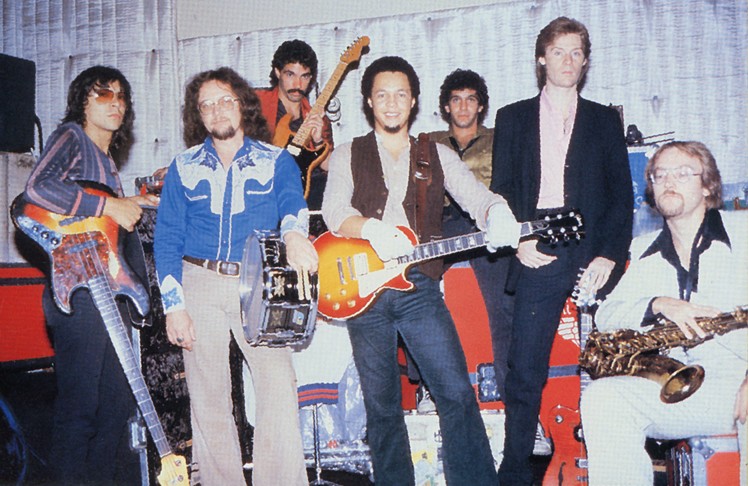
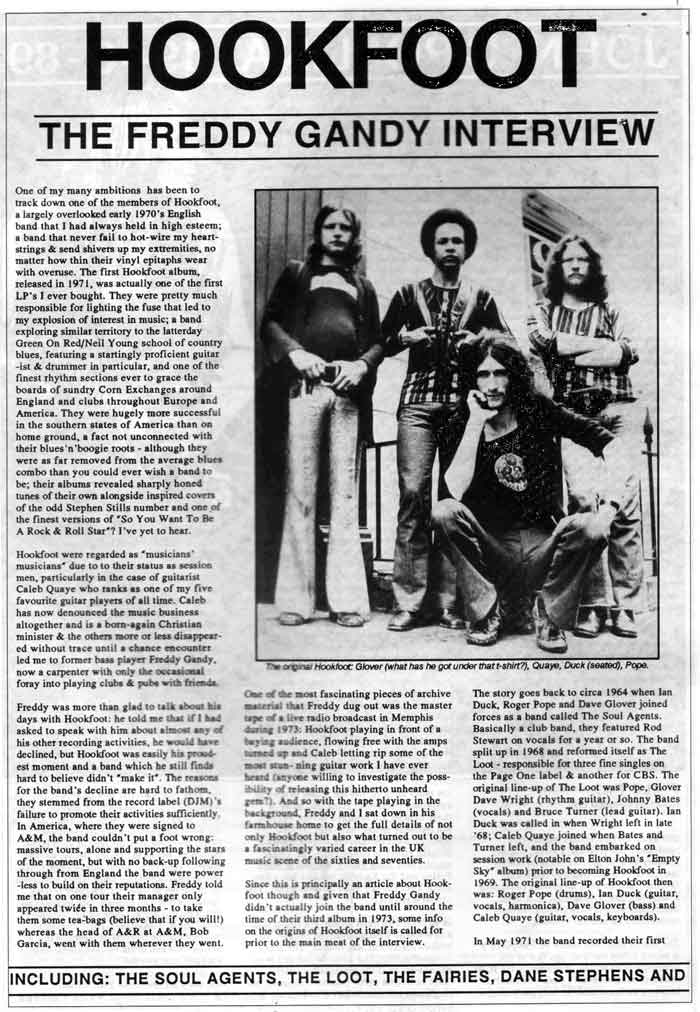
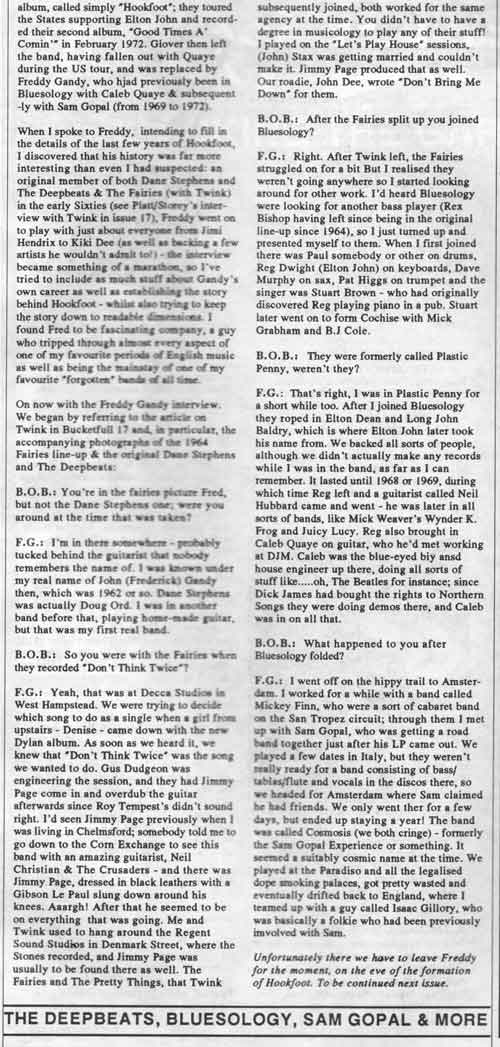
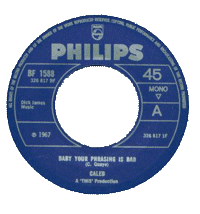
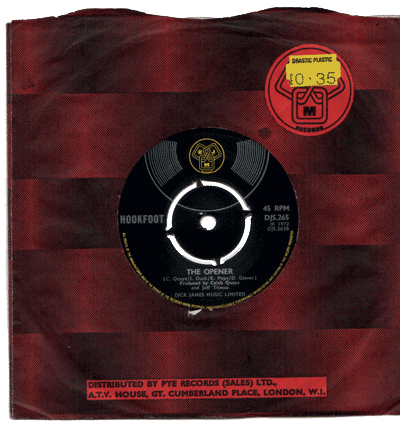
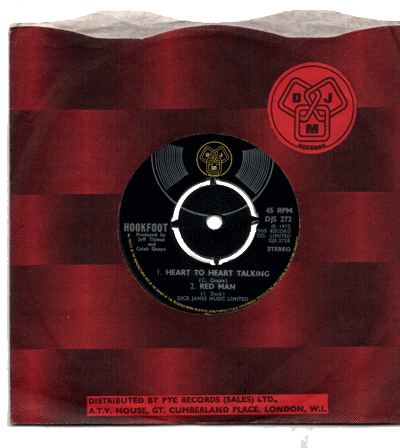
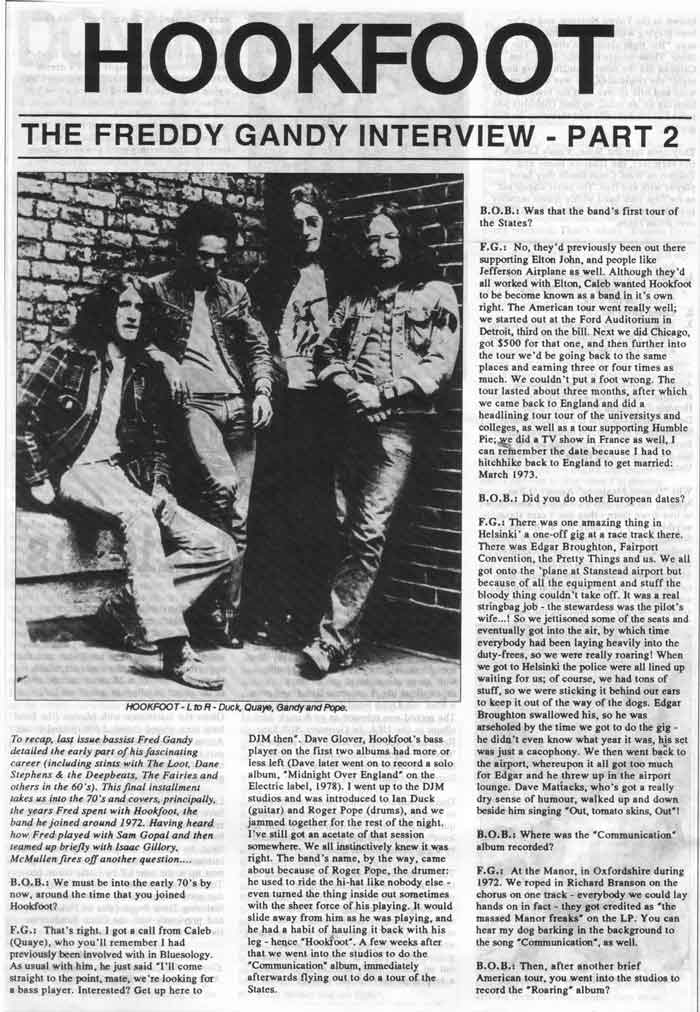
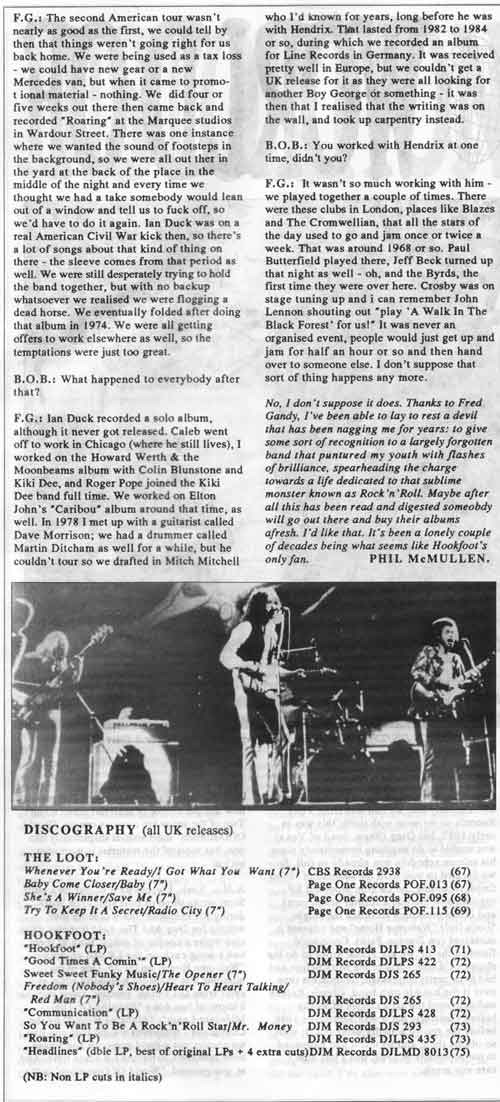
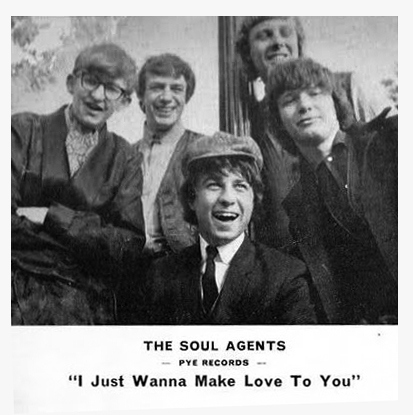
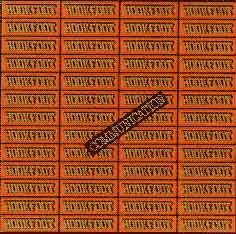
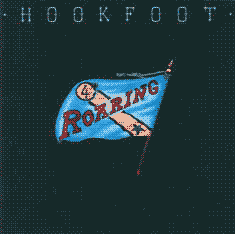
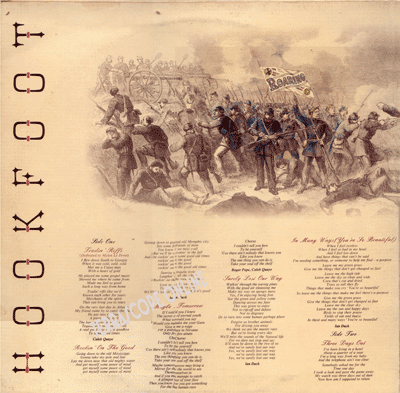
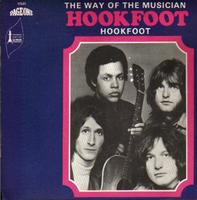
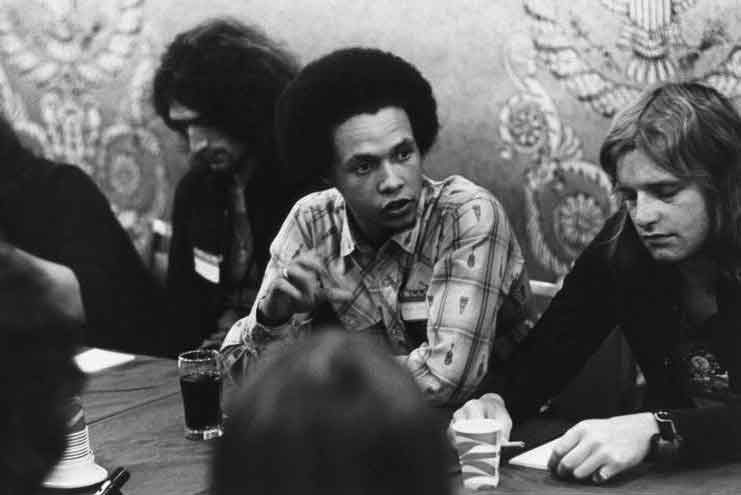
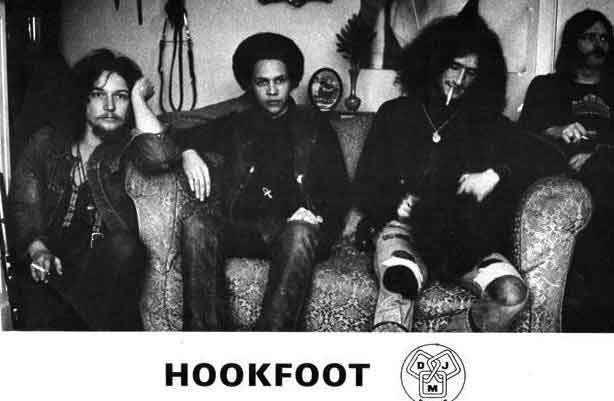
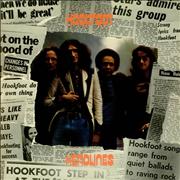
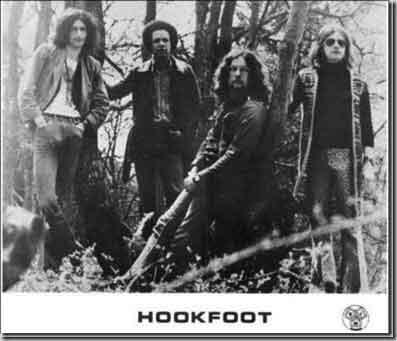
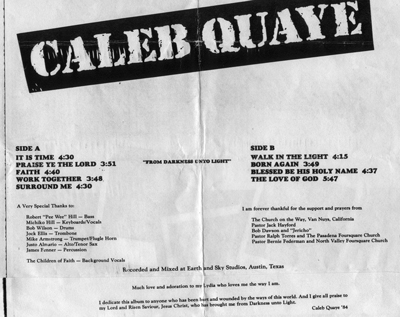
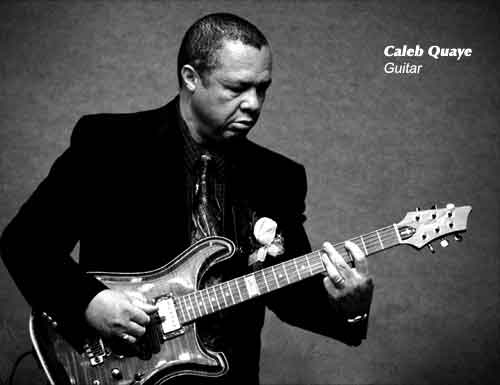
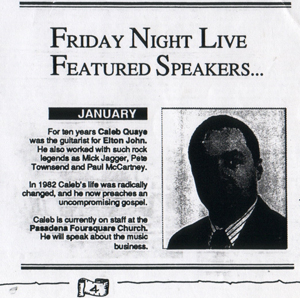
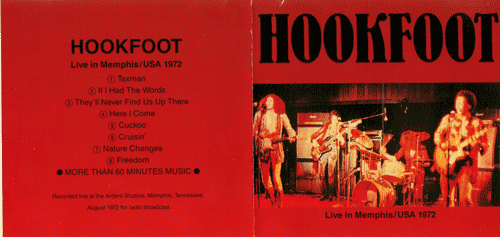
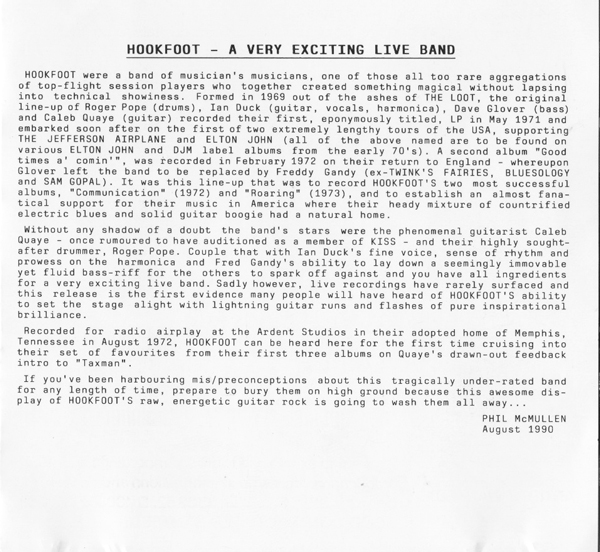
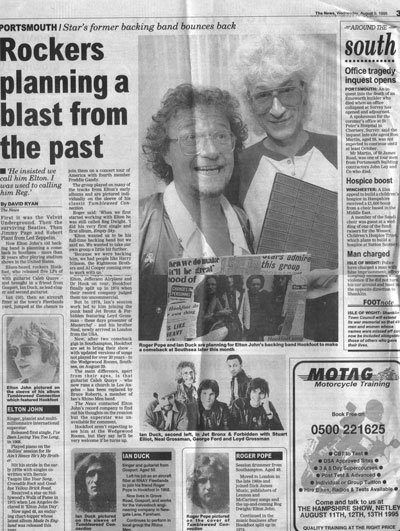


 Interview with Christian Musician Magazine
Interview with Christian Musician Magazine